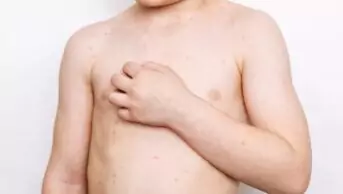
Courtesy Stacy Rodriguez, State University New Mexico
Sprays containing DEET (N,N-diethyl-meta-toluamide) or PMD (p-menthane-3,8-diol) are more effective at repelling the mosquito species that spreads Zika, chikungunya, yellow fever and dengue than other types of products on the market, a study has found. Sprays are also more long-lasting than other mosquito-repellent devices, the results conclude.
Researchers from the State University of New Mexico, one of the southern regions of the United States becoming increasingly vulnerable to mosquito-borne disease, tested the repellent effects of five mosquito sprays. They then compared them with alternative products, including wearable devices, a sonic repeller and a mosquito repellent candle.
All five sprays “significantly” reduced the levels of attraction of the Aedes aegypti mosquito — the principal vector for Zika, chikungunya, yellow fever and dengue — compared with the other products, the scientists report in the Journal of Insect Science
[1]
.
Of the sprays, two — Cutter Lemon Eucalyptus, containing 30% oil of lemon eucalyptus or PMD, and Ben’s Tick & Insect Repellent, containing 98% DEET — were the most effective, they say.
The researchers based their conclusions on testing five wearable devices: OFF! Clip-On; PIC Personal Sonic Mosquito Repeller; Mosquitavert Repellent Bracelet; Mosquito-No! Repellent Bracelet; and Invisaband; and one candle, Cutter Citro Guard.
The five sprays they tested were: Cutter Lemon Eucalyptus; All Terrain Kids Herbal Armor; Avon Skin-So-Soft Bug Guard Plus Picaridin; Repel Sportsmen Max Formula; and Ben’s Tick & Insect Repellent.
Each of the products was worn by, used, or applied by one of two human volunteers in a wind tunnel near a three-compartment cage containing Aedes aegypti female mosquitoes.
Each repellent was tested for a 15-minute period during which mosquitoes were free to wander from the middle compartment of the cage into either the compartment closer to the volunteer or the one further away.
The researchers then counted the number of mosquitos in each compartment to determine how attracted they were — or were not — to the repellent being tested.
The only wearable device that fared well in the study was OFF! Clip-On, which has a nebuliser to vaporise its repellent chemical, metofluthrin. The sonic repeller and bracelets showed no significant reduction in mosquito attraction.
“The recurrent outbreaks of arboviruses like dengue, chikungunya, and lately Zika in the Americas has created a large market for a variety of mosquito repellent and control products,” the authors explain.
“However, it has become apparent that not all repellents and/or repellent devices actually reduce mosquito attraction and that in many cases the claims made by the vendors of these products are exaggerated or simply false.”
They conclude that the results of their study show that DEET and PMD are very effective mosquito repellents when used in sufficient concentration, while the other active ingredients had lower efficacy.
“This finding confirms the findings of several other studies that found DEET 55 and PMD the most effective and longest lasting mosquito repellents currently available,” they write.
Commenting on the study, Larry Goodyer, professor of pharmacy practice at De Montfort University, who is a member of Public Health England’s advisory committee on malaria prevention (ACMP), says: “I think the bottom line is that pharmacists should follow the ACMP guideline which is that the first-line repellent is DEET 50% for use in malaria endemic areas. If you don’t like DEET, then the two recommended alternatives are picaridin or PMD and to choose products with the highest concentration.”
The researchers also note that their study focused on the efficacy of wearable devices and spray-on repellents against Ae. aegypti females and that further studies are necessary to explore the efficacy of these interventions on repelling other mosquito species.
References
[1] Rodriguez SD, Chung H-N, Gonzales KK et al. Efficacy of some wearable devices compared with spray-on insect repellents for the yellow fever nosquito, Aedes aegypti (L.) (Diptera: Culicidae). Journal of Insect Science 2017. 17(1):00;1–6. doi: 10.1093/jisesa/iew117


